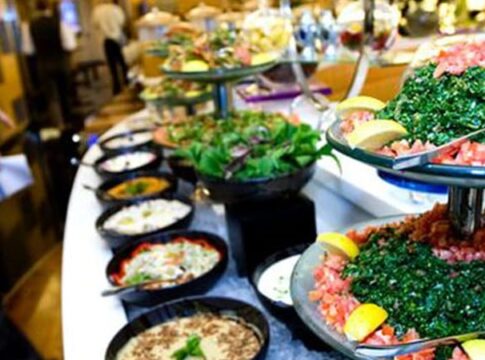In the Middle East and North Africa (MENA) region, food is a symbol of generosity and hospitality. However, the staggering amount of food wasted globally poses significant environmental, economic, and social challenges. An estimated 26 billion pounds of likely perfectly safe and edible food is discarded annually in the United States alone because of misunderstood labeling. This issue extends globally, affecting the MENA region as well.
Globally, approximately one-third of all food produced is wasted each year, amounting to 1.3 billion tons valued at nearly $1 trillion. In the MENA region, food waste is a significant issue, with an estimated 250 kg wasted per capita annually. This is especially concerning given the region’s arid climate and limited water resources.
Food waste contributes to approximately 8% of global greenhouse gas emissions. The economic cost of food waste is around $940 billion annually. On a social level, while millions of tons of food are wasted, nearly 690 million people go hungry every day. By saving just 36.7% of the $940 billion wasted annually, we could potentially provide $500 per year to each of these 690 million people, significantly alleviating global hunger. Accordingly Saving Less Than 40% of Food wasted annually can alleviate Global Hunger if a global strategy & logistics plan is set in place.
Governments, organizations, and individuals can adopt various strategies to tackle food waste, especially in the MENA region:
Universal Labeling Amendment: The FDA recommends using “best if used by” for freshness and “use by” for perishable goods. Clearer labeling can educate consumers and reduce unnecessary waste. “They read these dates and then they assume that it’s bad, they can’t eat it and they toss it, when these dates don’t actually mean that they’re not edible or they’re not still nutritious or tasty,” said Patty Apple from Food Shift. Such a unified global move towards standardizing labelling will be the first step in setting grounds for a solution.
Donation channels Logistics Development: Clearer labeling and donation rules could help nonprofits address world hunger. Consumers can use food labeled “best if used by” while donations can cover the period before the “use by” date. Separate Local Legislations and initiatives are currently in place for managing transfer of food remains from Restaurants, hotels and groceries are in place, yet integrating the process within the licensing through a unified body to manage the process is essential in developing the solution, along with developing related channels for public engagement with media awareness to develop the process in a sustainable manner for collection, as well as, re-dissemination.
Consumer Habits adjustments and Education: Due to the traditions and habits within the MENA region specially during Ramadan, celebrations, general family gatherings and invitations, the volume of wasted food is staggering, accordingly a media campaign is needed for encouraging savings, using leftovers, Creative recipes that can help reduce waste and sharing surplus food should be a gate way towards integrating the public into the process.
Addressing food waste is a multifaceted challenge requiring efforts from all sectors of society. By adopting sustainable practices and understanding the scale of the problem, we can make significant strides in reducing food waste. In the MENA region, where food holds special cultural significance, it’s time to turn the adage “Waste not, want not” into action for the sake of our planet and future generations.


